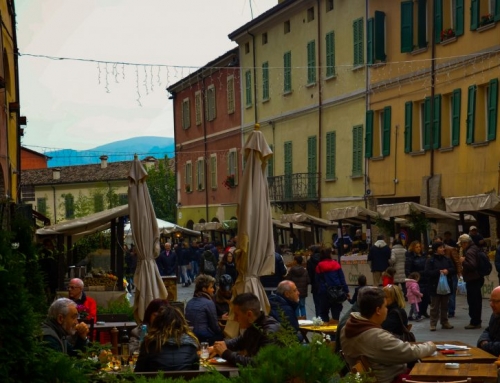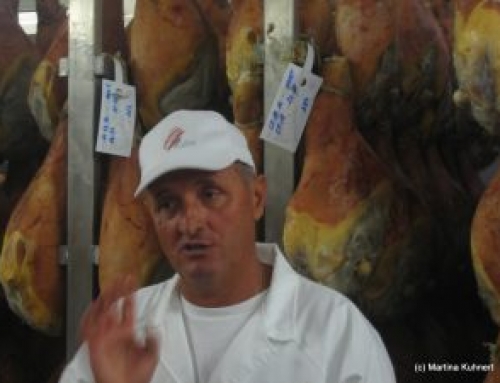On the occasion of the upcoming “Aria di Festa” (food festival of Prosciutto di San Daniele) on June 28th-30th, I have a few thoughts about Prosciutto (cured meat) in general and the difference between Prosciutto di Parma and di San Daniele to share with you. Both are well known around the world, when we buy the samples at the end of the market tour, both are obligatory – you actually have to taste them side by side to get the difference.
Italian ham
Both are known as Italian ham and most people abroad don´t even know, that there actually is a difference. When we buy it at the market, the vendor cuts it fresh from the thigh (which is essential for the taste) and for unversed eyes, both look exactly the same, just the seal is a different one. It gets even harder to point out the diversity by explaining the production process – it´s the same: only the thigh of north Italian pigs of a certain quality are used, the raw material gets covered with sea salt for some days and then air dried for at least 12 month.
Difference between prosciutto di Parma and prociutto di San Daniele
So what makes the difference in the end? Believe it or not, but it´s only the air at the drying location. While prosciutto di Parma is produced in the rolling hill near Parma, prosciutto di San Daniele matures 200 km further north, in Friuli. The factories in Parma are proud about the very distinctive, earthy taste and they swear on the breeze which crosses their hills, coming from the Tuscan sea. In order to get the best possible conditions for the maturing process, they built the factories on top of the hills, windows to all sides and blends to regulate the incoming air. San Daniele on the other hand has the river Tagliamento, one of the last European rivers, to preserve its original course, which regulates the humidity and temperature in the area. The breeze coming from the Carnac Alps mingles with the fresh wind from the Adriatic coast and all together it creates the perfect condition to mature ham.
Tasting for foodies
Like I said: you have to taste it side by side to really get the difference and in the end it´s a matter of personal taste which one you prefer – main thing is, you get it freshly cut and value the knowledge and work, which is involved in every single piece!
http://culinaryfactorytours.com/festival-del-prosciutto-di-parma/








Leave a Reply